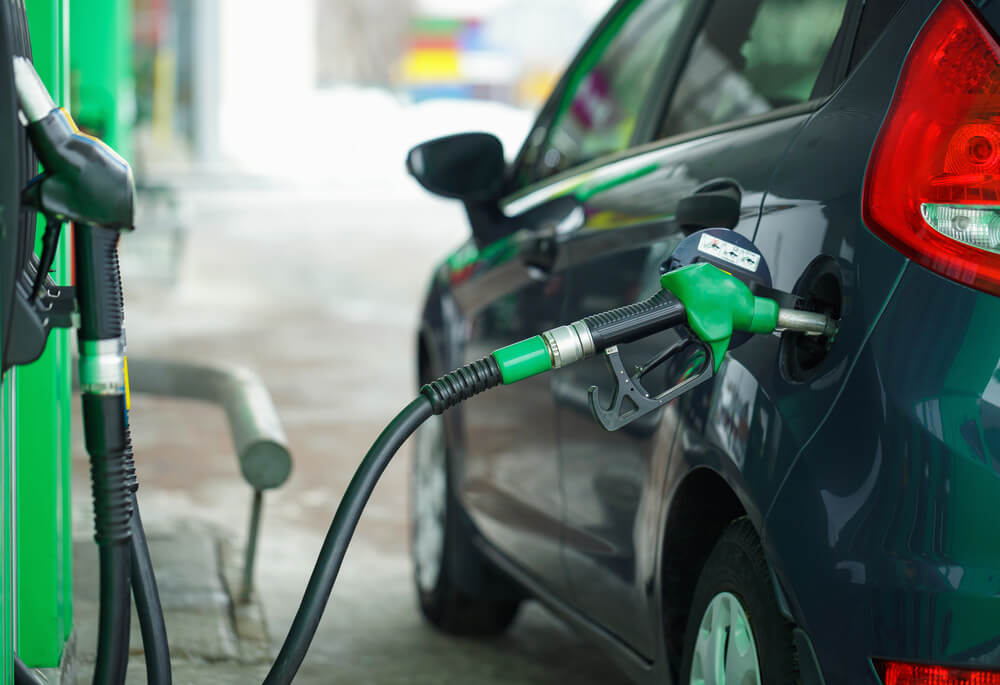Most drivers choose the cheapest option or lowest grade fuel; however, others purchase the most expensive or highest grade because they assume it is best for their vehicle’s engine. If you are confused by the three buttons, don’t mistakenly pull up to the diesel pump because that’s a confusing territory, too. Basic knowledge of fuel types and grades is useful for any driver and will help you make decisions that will improve the function of your car. Below are the types of fuels available today, their characteristics, and their common uses.
You’re reading one of our “Beginner Driver’s Guide” articles. Need to practice for your upcoming exam? Take our free sample driving test -- no registration required! ✨
Here are the most common types of fuel in cars.
- 1
Gasoline
Gasoline is the most common automobile fuel and is used all over the world to power cars, motorcycles, scooters, boats, lawnmowers, and other machinery. It is a specialized fossil fuel made from petroleum, hence its nickname “petrol” in the U.K. It is also important to note that hydrocarbons in gasoline and carbon dioxide from producing it contributes to pollution and smog. Despite this, you can find gas stations all over the place.
Gas is commonly available in three octane ratings or “grades.” Grades are denoted by the research octane number (RON) and AKI of a specific formula. Stickers or labels will inform drivers which pump releases each grade. 87 AKI is generally the lowest octane rating and cheapest option. Next is mid-grade with 88-90 AKI. Lastly, premium or high-grade gasoline has an octane rating of 90-94 AKI.
The different grades of fuel don’t burn the same way. The less octane, or the lower the grade, the faster and stronger it burns when pressurized. SUVs and sports cars run better on plus or premium (higher octane) since their motors produce more fuel compression for better drivability. But most vehicles function just fine on the lowest and cheapest gasoline option. You won’t realize a better fuel economy if you opt for plus or premium gas for a car that recommends regular gas.
The following video gives you an idea of different grades and their usage:
- 2
Diesel Fuel
Diesel fuel is also made from petroleum but is refined using a different method than that used to create gasoline. Many large and industrial trucks use diesel fuel, as do transfer trucks and agricultural equipment. There are two types of diesel fuel, one specifically for automobiles and one for off-road vehicles.
A resurgence of diesel-powered vehicles has taken place in the past few years because of the rising price of all fuels, including gasoline and diesel. Diesel-powered cars typically get better gas mileage or fuel efficiency than gasoline-powered vehicles. Also, some drivers feel that they get a better value for their money even if diesel is more expensive. Volkswagen is a well-known manufacturer of diesel cars. The next video will illustrate the difference between petrol and diesel engines:
- 3
Bio-diesel
Diesel fuel that is created using vegetable oils or animal fats is called bio-diesel. It can be made using soybean oil, lard, algae, and vegetable oils. Some inventive drivers have found ways to recycle used cooking oils into biodiesel that powers altered car engines. Watch the following video to learn more about biofuels:
- 4
Ethanol
Although ethanol is not widely used as general automobile fuel, it is added to our common gasoline as an additive. Many car manufacturers are designing vehicles that can be powered by ethanol because it is a cost-effective fuel made from renewable resources like corn and sugarcane. If you are in the market for an ethanol-powered vehicle, there are a few car models that can run on 100 percent ethanol.
Most cars these days run on gasoline, but others are increasing in popularity, especially battery powered vehicles. Make sure that you are purchasing the correct type of fuel for your vehicle for peak performance.
And finally, those new drivers, who are still learning how to pump gas, will find the following guide useful:
- Alabama
- Alaska
- Arizona
- Arkansas
- California
- Colorado
- Connecticut
- Delaware
- District Columbia
- Florida
- Georgia
- Hawaii
- Idaho
- Illinois
- Indiana
- Iowa
- Kansas
- Kentucky
- Louisiana
- Maine
- Maryland
- Massachusetts
- Michigan
- Minnesota
- Mississippi
- Missouri
- Montana
- Nebraska
- Nevada
- New Hampshire
- New Jersey
- New Mexico
- New York
- North Carolina
- North Dakota
- Ohio
- Oklahoma
- Oregon
- Pennsylvania
- Rhode Island
- South Carolina
- South Dakota
- Tennessee
- Texas
- Utah
- Vermont
- Virginia
- Washington
- West Virginia
- Wisconsin
- Wyoming





